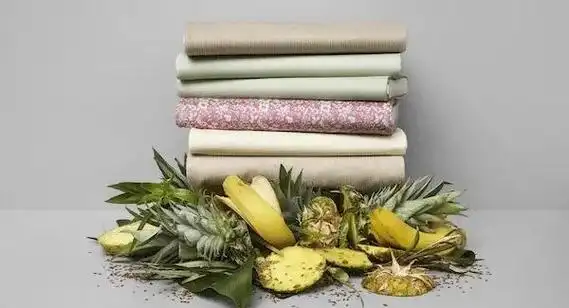
For decades, fashion’s sustainability problem has been ignored in favor of faster production and lower costs. But today’s consumers are demanding transparency, durability, and eco-accountability—and hemp is rapidly emerging as the textile industry’s secret weapon. This ancient plant fiber is not only low-impact to grow and biodegradable, but also stronger, more breathable, and longer-lasting than many conventional materials.
Hemp clothing is transforming the fashion industry by offering a sustainable, high-performance alternative to cotton and synthetic fabrics. With low water usage, natural pest resistance, and strong consumer appeal, hemp is being adopted by major brands seeking to reduce their environmental footprint and increase product longevity.
Take the example of a U.S.-based streetwear label that replaced its conventional cotton T-shirt line with hemp-organic cotton blends. Not only did they slash their water footprint by over 70%, but they also saw a 38% increase in returning customers. Sustainability wasn’t just a brand value—it became a growth driver.
What Makes Hemp Clothing a Game Changer in Sustainable Fashion?
Hemp clothing revolutionizes sustainable fashion due to its fast-growing, low-resource cultivation, inherent durability, and biodegradability. It allows brands to reduce environmental impact while meeting rising demand for eco-friendly, long-lasting garments.
In a market saturated with greenwashed marketing, hemp stands out as a truly regenerative fiber. It checks every box: low emissions, low water use, high fiber yield, and excellent wear performance.
Why Hemp Is Reshaping Sustainability in Apparel
1. Environmental Superiority over Conventional Fibers
| Metric | Hemp | Cotton | Polyester |
|---|---|---|---|
| Water per kg of fiber | 300–500 liters | 10,000–20,000 liters | Not biodegradable |
| Pesticides used | None required | High | N/A (synthetic) |
| Carbon sequestration | High (1.6x trees) | Low | Emits CO₂ in prod. |
| Biodegradability | 100% | 100% | No |
Stockholm Environmental Institute, 2022; Textile Exchange
2. Inherent Fiber Performance
- Naturally antimicrobial (ideal for socks, underwear, activewear)
- UV-resistant, making it great for summerwear
- Breathable, moisture-wicking, yet highly durable
According to McKinsey’s 2023 Sustainable Fashion Report, 43% of Gen Z and Millennials now prioritize natural, biodegradable materials—with hemp consistently scoring high in trust surveys.
3. Circular Design Compatibility
Hemp integrates well into circular fashion models:
- It’s compostable at end of life.
- It pairs well with recycled trims and low-impact dyes.
- It’s used in closed-loop systems by zero-waste designers.
A European outdoor brand launched a hemp-based capsule collection with a “return-for-compost” initiative. 60% of buyers opted in for product recycling, reinforcing circularity and brand loyalty.
How Is Hemp Fabric Produced and What Innovations Are Improving Its Quality?
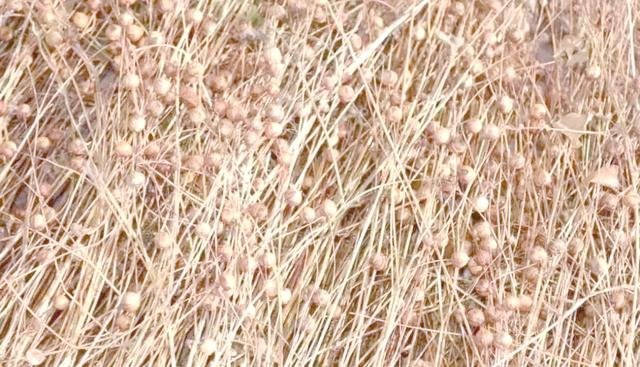
Hemp fabric is made from the stalks of the cannabis sativa plant using processes like retting, decortication, and spinning. Innovations like enzymatic processing, fiber softening, and blend engineering are making hemp fabrics smoother, softer, and more adaptable for modern fashion.
Once associated with rough canvas or rustic garments, hemp has evolved dramatically through tech-driven advancements. It’s now viable for everything from streetwear to high fashion, with the performance to back it up.
The Production Process and Emerging Technologies
1. Hemp Fabric Production Overview
| Step | Description | Innovation Impact |
|---|---|---|
| Retting | Separates fiber from plant core | Enzymatic retting = softer results |
| Decortication | Mechanically removes bark from stalk | Clean fiber prep for smoother yarn |
| Spinning | Fibers spun into yarn | Ring or air-jet spinning for quality |
| Weaving/Knitting | Fabric construction | Circular knitting = soft hand-feel |
| Finishing | Enzyme or silicone washes | Improves drape and comfort |
2. Modern Enhancements in Fiber Quality
- Enzyme retting reduces the coarseness of hemp, making it comparable to linen.
- Combed yarn spinning allows for finer, more uniform yarns suitable for light knits and fashion apparel.
- Hemp blends with TENCEL™, cotton, or bamboo deliver hybrid functionality.
SzoneierFabrics developed a hemp-TENCEL blend with a silk-like finish, used in a Korean luxury sleepwear line. The line sold out during pre-order due to its unique drape and breathable comfort.
3. Sustainability in Processing
- Closed-loop dyeing systems with natural pigments
- Digital fabric inspection for reducing waste
- Low-energy enzyme processing that replaces harsh chemicals
Why Are Major Fashion Brands Shifting Toward Hemp-Based Apparel?
Major fashion brands are adopting hemp-based apparel to align with environmental targets, meet consumer demand for sustainable materials, and reduce dependence on water- and chemical-intensive fibers like conventional cotton.
From heritage denim labels to premium athleisure brands, the shift toward hemp reflects a broader industry pivot toward regenerative materials that balance eco-performance and brand narrative.
Key Drivers Behind Brand Adoption of Hemp
1. Environmental Targets and ESG Goals
Brands with public sustainability commitments (e.g., H\&M, Levi’s, Patagonia) are seeking alternatives that:
- Lower carbon footprints
- Reduce water usage
- Improve soil and biodiversity impact
Levi’s began experimenting with cottonized hemp in 2019, launching hemp-cotton jeans and jackets that look and feel like denim but require significantly less water. This pilot reduced water consumption by up to 30% compared to traditional cotton styles.
2. Marketing and Consumer Demand
According to a 2023 First Insight x Wharton study:
- 69% of Gen Z consumers are willing to pay more for sustainable fashion
- 53% trust brands more when they offer traceable natural materials like hemp
This opens space for hemp-based collections marketed under themes like “earth-friendly comfort” or “plant-powered performance.”
3. Material Innovation and Fabric Softness
Past resistance to hemp stemmed from its stiff texture. With new enzyme and blend innovations, brands are now using hemp in:
- Streetwear basics
- Formal blouses
- Babywear
- Yoga apparel
A premium basics brand in London launched a hemp-modal blend capsule with SzoneierFabrics and recorded a 42% higher average order value for those products vs. traditional cotton SKUs.
4. Supply Chain Flexibility
Hemp fabric now benefits from a growing global infrastructure:
- Reliable bulk production in China and India
- EU-compliant processing in Romania and Ukraine
- Low-MOQ sampling available through vertical manufacturers like SzoneierFabrics
Which Hemp Fabric Blends Are Most Popular in Commercial Fashion Lines?
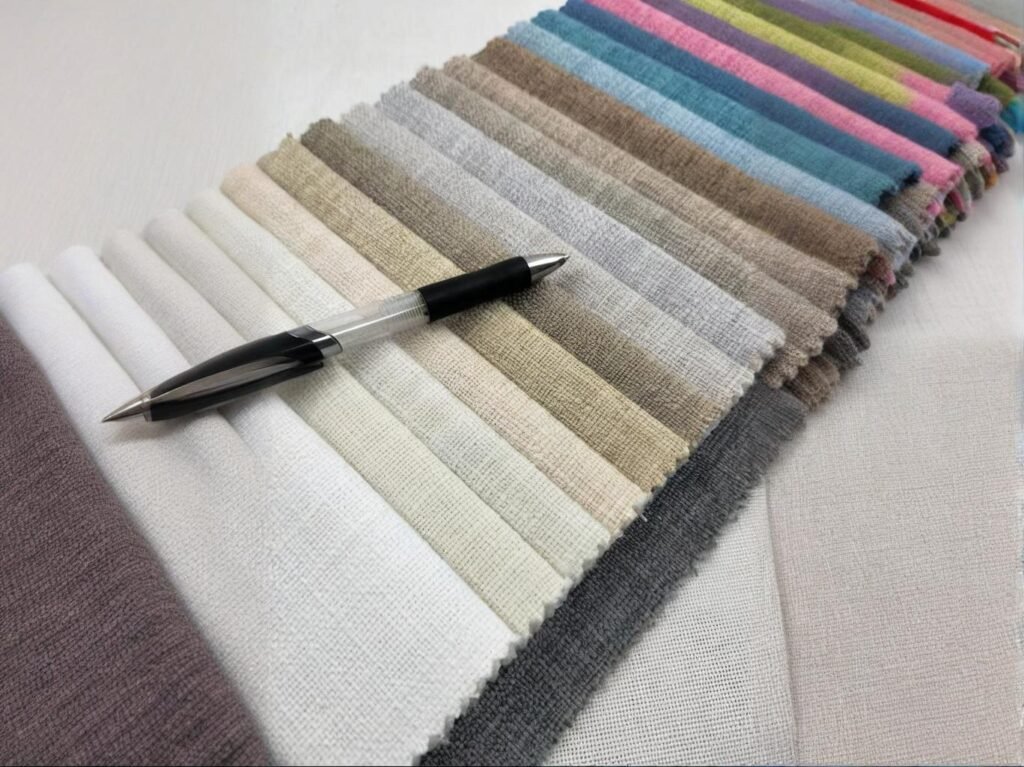
The most commercially viable hemp fabric blends include hemp-organic cotton for everyday basics, hemp-TENCEL™ for luxury softness, hemp-modal for elevated casualwear, and hemp-spandex for flexible, close-fitting garments.
These blends allow designers to tailor hand feel, stretch, drape, and cost based on product category—making hemp suitable for everything from high-performance leggings to soft, breathable tees.
Strategic Hemp Blends for Fashion Markets
1. Hemp-Organic Cotton (55/45 or 60/40)
- Use Cases: T-shirts, sweatshirts, kidswear
- Why Brands Love It:
- Softens with each wash
- More breathable than cotton
- Easy to dye and screen print
| Performance Metric | Hemp-Cotton Blend vs. 100% Cotton |
|---|---|
| Durability (wash cycles) | 30% higher |
| Shrinkage rate | 20% lower |
| Moisture-wicking | 2x better |
2. Hemp-TENCEL™ (50/50)
- Use Cases: Resortwear, dresses, elevated basics
- Advantages:
- Drape and softness similar to silk
- Biodegradable and breathable
- Ideal for luxury eco-collections
3. Hemp-Modal (60/40)
- Use Cases: Lounge sets, soft tees, sleepwear
- Benefits:
- Silky smooth finish
- High color retention
- Great for digitally printed collections
A Canadian eco-brand released a hemp-modal sleepwear set with branded digital patterns. The unique fabric feel and plant-based appeal led to a 27% subscription increase for their email list in just one month.
4. Hemp-Spandex or Hemp-Elastane (90/10 or 95/5)
- Use Cases: Yoga wear, fitted tops, bike shorts
- Performance:
- Maintains shape over time
- Breathable yet body-contouring
- Sustainable replacement for polyester-heavy activewear
| Blend Type | Market Segment | Pricing (USD/meter) | MOQ (at Szoneier) |
|---|---|---|---|
| Hemp-Organic Cotton | Basics, DTC apparel | \$7–\$10 | 300 meters |
| Hemp-TENCEL™ | Premium fashion | \$10–\$14 | 300 meters |
| Hemp-Modal | Sleepwear, leisure | \$9–\$12 | 200 meters |
| Hemp-Spandex | Athleisure, yoga | \$8–\$11 | 500 meters |
SzoneierFabrics can customize any of these blends by adjusting GSM, knit/woven structure, or dyeing methods to match brand-specific requirements.
Is Hemp Clothing Viable for Mass Production and Fast Fashion Scalability?
Yes, hemp clothing is increasingly viable for mass production thanks to globalized supply chains, improved fiber processing, and growing consumer demand for sustainable fashion. Modern spinning and finishing technologies have made hemp adaptable to fast fashion timelines without sacrificing eco-performance.
Once considered too niche or coarse for the mass market, hemp is now scalable through upgraded manufacturing processes, competitive pricing, and flexible supply options from experienced manufacturers like SzoneierFabrics.
What Makes Hemp Ready for Scaled Apparel Production?
1. Factory Compatibility and Equipment Integration
Unlike exotic or experimental fibers, hemp does not require specialized machinery. It can be spun, dyed, and woven on the same systems used for cotton or linen—with only minor adjustments for fiber softness or blend ratios.
| Stage of Production | Compatibility Level | Equipment Notes |
|---|---|---|
| Spinning | ✔✔✔ | Works on ring and rotor |
| Knitting | ✔✔✔ | Ideal for circular knits |
| Weaving | ✔✔✔ | Standard looms, jacquard ready |
| Dyeing/Finishing | ✔✔ | Enzyme wash + digital print |
2. Lead Times and Production Capacity
With established supply networks in China, India, and Eastern Europe, many B2B suppliers can deliver:
- Sampling in 5–7 working days
- Bulk orders in 15–25 working days
- Reorders with consistent fiber specs in <10 days
SzoneierFabrics maintains in-stock hemp yarns and pre-dyed fabric rolls for faster replenishment, helping clients avoid delays common in specialty fabric markets.
3. MOQ Flexibility for Test Launches
Hemp is no longer only available in high-volume commodity runs. Factories now support:
- 100–200 meters for test batches
- 300–500 meters for private label rollouts
- 1000+ meters for chain store production
4. Use Cases in Fast Fashion
- T-shirts under \$20 retail
- Capsule collections (eco labels, collabs)
- Basic loungewear sets
- Seasonal fashion trends with short lead cycles
A DTC fashion brand in Australia launched a hemp-based basics line with 500 units of each SKU. They ran A/B testing with cotton and hemp versions and found the hemp items outsold the cotton 1.6x in the first month.
What Certifications and Standards Should Fashion Buyers Look for in Hemp Products?
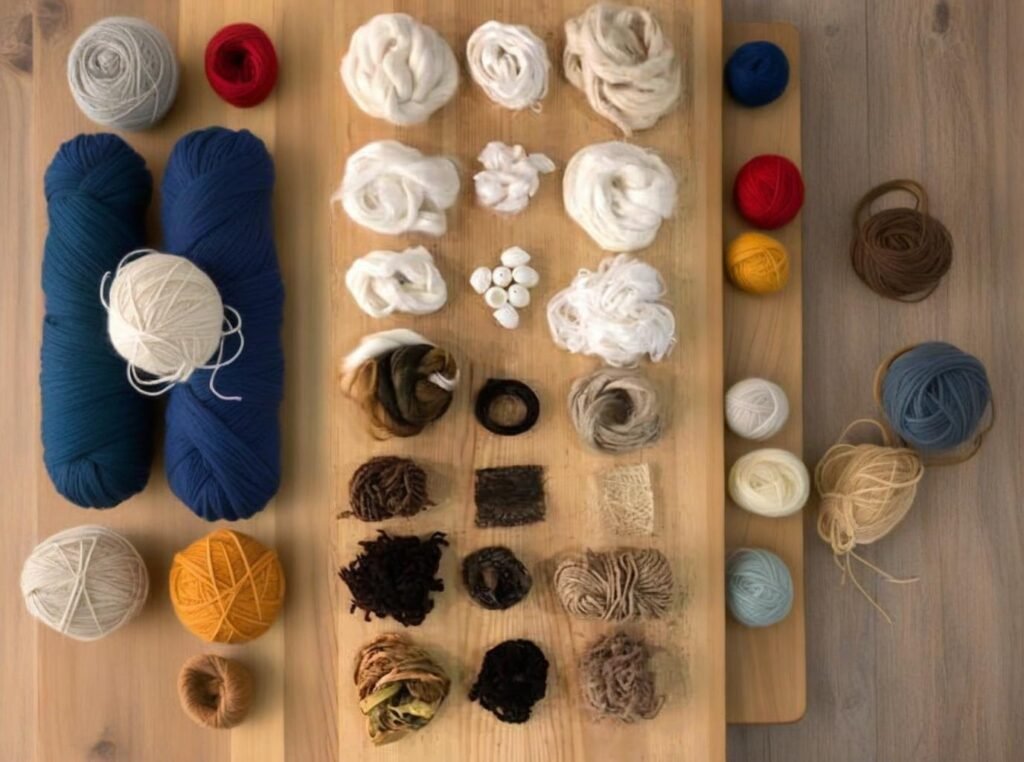
Fashion buyers should prioritize certifications like GOTS, OEKO-TEX Standard 100, USDA Organic, and EU REACH compliance when sourcing hemp fabrics. These ensure fiber safety, environmental performance, and consumer trust—especially for export to Europe and North America.
In today’s regulated markets, certifications aren’t just checkboxes—they’re tools for compliance, marketing, and retail access. Certifications also support price premiums and retailer onboarding.
Top Hemp Certifications and Their Meaning
1. GOTS (Global Organic Textile Standard)
- Applies to: Organic hemp, cotton, blends
- Covers: Farming, processing, packaging, labeling, social criteria
- Required for: Export to organic-certified retailers, sustainable marketplaces
Buyer Tip: SzoneierFabrics offers GOTS-certified hemp-cotton blends with full documentation and transaction certificates for EU/US buyers.
2. OEKO-TEX® Standard 100
- Applies to: Finished fabrics and dyes
- Ensures: No harmful chemicals, safe for skin contact
- Ideal for: Babywear, sleepwear, intimate fashion
3. REACH Compliance (EU)
- Applies to: Dyes, finishes, and chemical treatments
- Needed for: Selling in the EU and UK fashion retail markets
- Ensures: Zero use of banned substances, safer workplace exposure
4. USDA Organic (U.S. Market)
- Focuses on: Fiber cultivation only
- Recognized by: Whole Foods, Amazon’s Climate Pledge Friendly, and U.S. retailers
| Certification | Focus Area | Recognized In | Ideal For |
|---|---|---|---|
| GOTS | Fiber + process | EU, US, Asia | Organic fashion, premium retail |
| OEKO-TEX 100 | Dye + fabric safety | Global | Sleepwear, kidswear, direct-to-skin |
| REACH | Chemical compliance | EU | Apparel exports to Europe |
| USDA Organic | Crop-level standards | USA | Natural clothing sold in the U.S. |
Products with GOTS and OEKO-TEX double certification are 67% more likely to be approved by premium online platforms like Zalando Green or Nordstrom’s Sustainable Edit.
How Does Hemp Support Circular Economy and Zero-Waste Design Goals?
Hemp clothing supports circular economy principles by being fully biodegradable, requiring minimal inputs for cultivation, and offering long-lasting wear that reduces replacement cycles. It also integrates well into zero-waste design systems due to its durability, compostability, and compatibility with digital and low-impact finishing techniques.
As the fashion industry shifts from a linear “take-make-dispose” model to circular thinking, materials like hemp offer the physical and ecological properties necessary to close the loop.
Hemp’s Role in Building a Circular Fashion Future
1. Biodegradability at End-of-Life
Hemp breaks down naturally in soil within 3–6 months under composting conditions—unlike polyester, which can take 200+ years. Brands building “return and compost” programs can easily include hemp-based items.
A Dutch label launched hemp T-shirts with compostable buttons and thread. After wear, customers return the items to be turned into soil—a 100% closed-loop product.
2. Material Longevity and Reusability
Due to its high tensile strength and resistance to UV damage, hemp garments:
- Last longer than cotton (up to 3x wear life)
- Withstand repeated washing
- Require fewer replacements
A lifecycle study by WRAP UK found that hemp-cotton blended jeans remained structurally sound after 50+ washes, while pure cotton versions showed tear and shrinkage after 30 washes.
3. Design for Disassembly
Hemp integrates easily into:
- Garments with modular or repairable components
- Multi-season, multifunctional pieces
- Minimalist silhouettes that reduce fabric waste
4. Low-Impact Printing and Dyes
Hemp performs well with:
- Digital printing, reducing water use by 90% compared to screen printing
- Natural dyes, like turmeric or madder root, which adhere well to hemp’s fiber texture
5. By-Product Utilization
Manufacturers can use leftover hemp scraps to produce:
- Packaging textiles (e.g., pouches, wraps)
- Insulation materials
- Paper or bio-composites
What Should B2B Buyers Consider When Sourcing Hemp Clothing from Manufacturers?
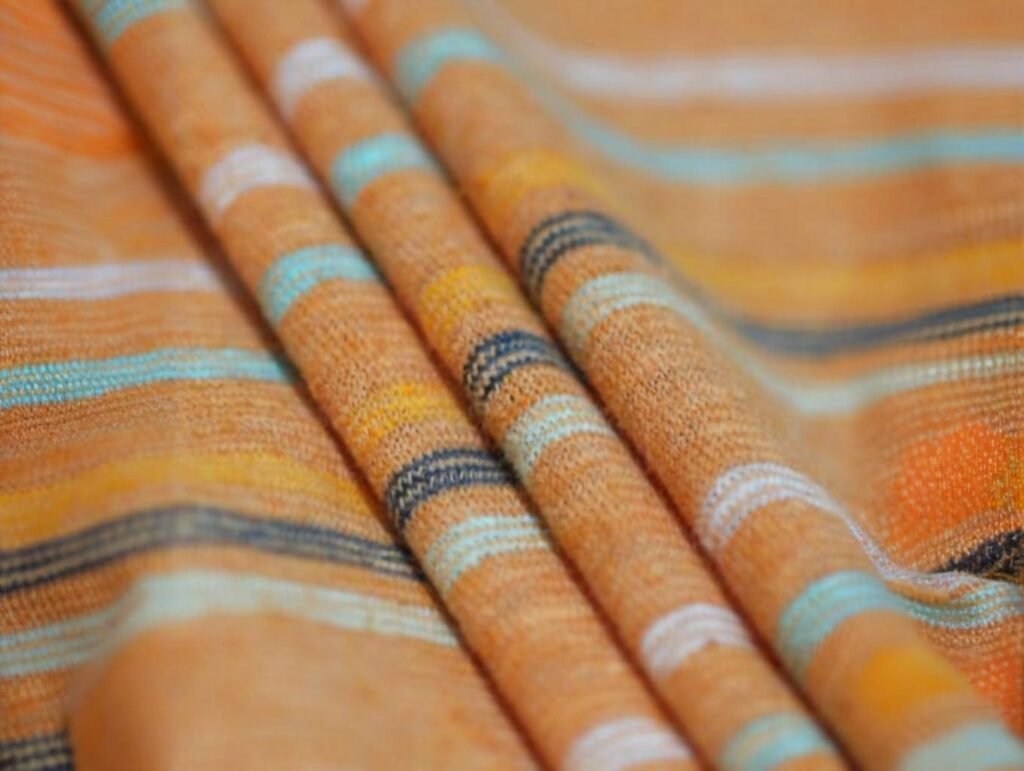
When sourcing hemp clothing, B2B buyers should consider the manufacturer’s fabric specialization, MOQ flexibility, customization capabilities, certification transparency, and logistics reliability. Clear communication and development support are crucial for long-term success.
Choosing the right partner ensures your brand doesn’t just “go green” on paper, but actually builds viable, profitable product lines that resonate with eco-conscious consumers.
B2B Buyer Checklist for Hemp Apparel Sourcing
1. Fabric Versatility & Blends
Look for suppliers who can offer a wide range of hemp blends (cotton, TENCEL™, modal, spandex) across different weights and structures (woven, knit, fleece, twill).
| Fabric Option | Weight (GSM) | Ideal Use Case |
|---|---|---|
| Hemp-Organic Cotton | 180–240 | T-shirts, basics |
| Hemp-TENCEL™ Twill | 200–280 | Shirts, dresses |
| Hemp-Spandex Jersey | 220–250 | Leggings, activewear |
| Hemp Modal Knit | 180–220 | Loungewear, sleepwear |
2. MOQ & Sampling Flexibility
- Minimums starting from 100–300 meters allow test orders
- Free sample swatches show fabric quality upfront
- Fast prototyping supports short development timelines
SzoneierFabrics offers free design support and fast sample delivery (as quick as 5–7 working days), even for new buyers.
3. Certifications & Compliance
Always confirm:
- GOTS, OEKO-TEX, USDA Organic, REACH (based on market)
- Fiber content traceability
- Dye and print compliance (especially for children’s clothing or sleepwear)
4. Lead Time and Reorder Stability
- Can they deliver bulk in 15–25 working days?
- Do they offer consistent dye lots and reorder support?
- Is there a dedicated account manager?
5. Private Label & OEM Services
B2B clients often need:
- Custom hangtags or woven labels
- Brand-specific colors or prints
- Packaging support for retail readiness
Ready to Source High-Quality Hemp Fabrics with SzoneierFabrics?
As a trusted B2B fabric supplier with years of expertise, SzoneierFabrics is ready to help you launch or expand your hemp clothing product line. Whether you’re looking for custom blends, eco-certifications, or scalable low-MOQ solutions, our team provides end-to-end support from sampling to mass production.
Let us help you build the future of fashion—sustainably, affordably, and efficiently.

